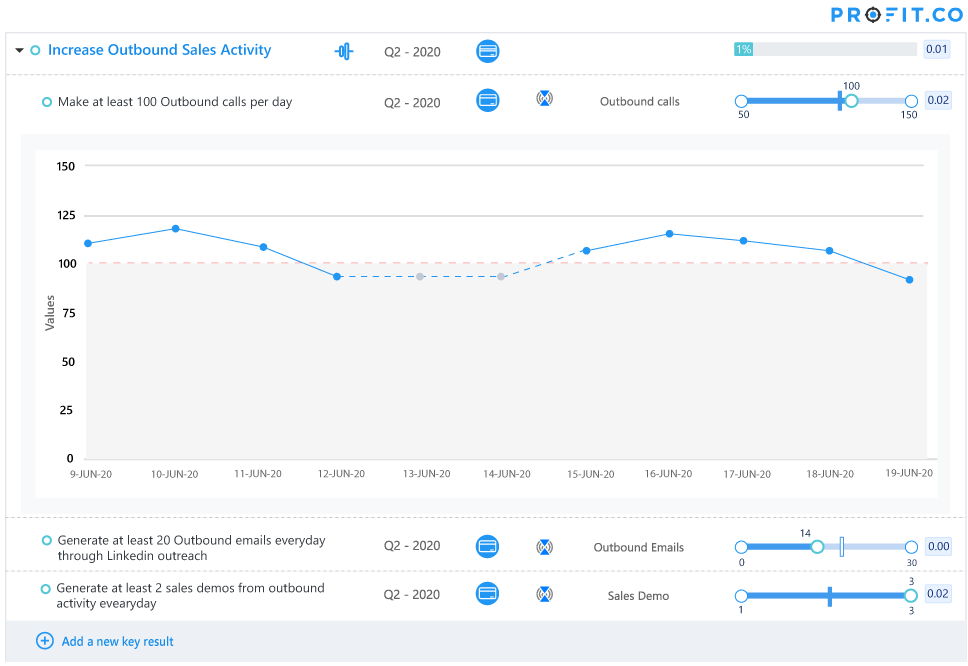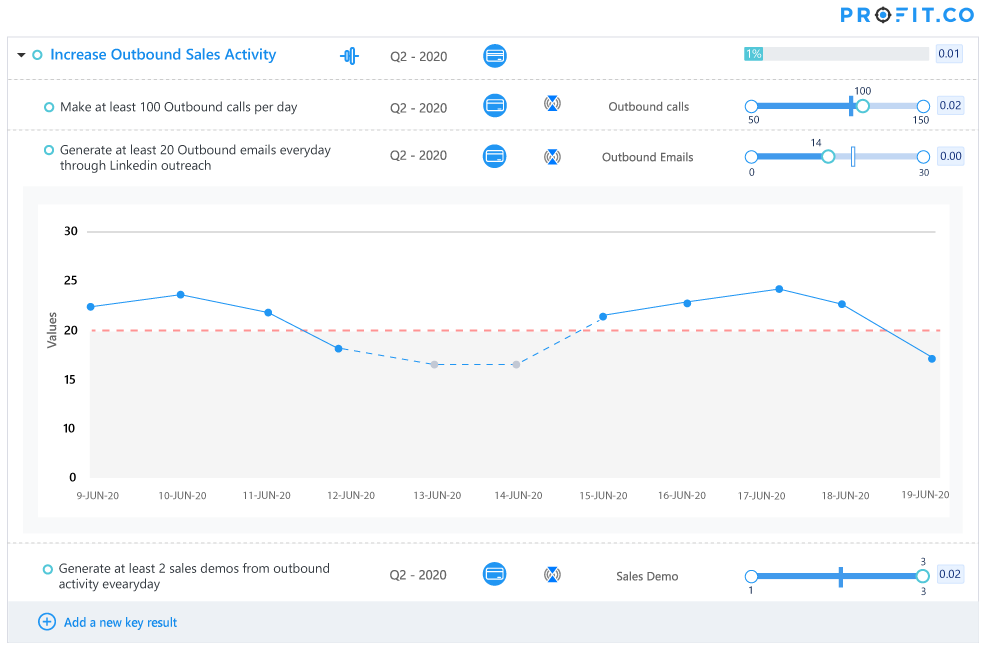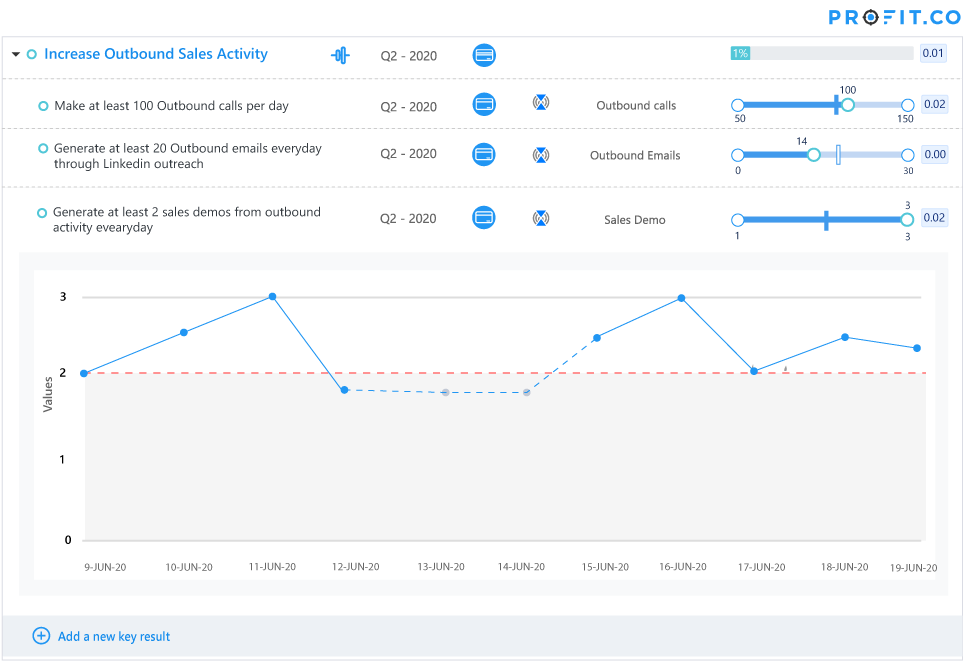Generally, OKRs are recommended for strategic and really important initiatives that move the business forward. When a well respected OKR consultant, Mr.L., was talking about this, he mentioned that it becomes too difficult to manage the proliferation of OKRs when the scope and application of OKRs are broadened beyond the most important.
When we talk to our customers and prospects, we constantly get asked about the process of pushing OKRs all the way down to the individual contributor level. How does it really work? We talk about this process in an earlier post be on the right, where you have a bunch of inputs to any sort of business process, which gets converted to outputs that lead to business outcomes.
We also said in that post that you should try to stay towards the right when you try to set up your key results, especially at the top of the OKR tree. In that same post we talk about how employee productivity or efficiency or effectiveness is an issue in a certain process. And we found a way to move away from measuring employee effectiveness directly. Instead of that start focusing on the business outcome that the business would have if those employees’ effectiveness was high.
Mr.L was clear that the problem is not that OKRs can’t be applied at the operational level. It’s simply the management of it that can lead to a lot of frustrations. And that the problem can be solved with the help of good OKR software, especially if they can automate the “management function” associated with setting targets, tracking, reporting exceptions, and helping the OKR owner to achieve their goals.
OKRs at the operational level, hence seems to be a question of feasibility, not applicability. As you will see, it’s not just possible for OKRs to become our daily management tool, but OKRs can be extremely effective in automating daily management and take a lot of management overhead out of the system. So, how would you take OKRs to the operational level and reap the benefits of focus, alignment, commitment, tracking and stretching? Let’s take a really simple example to illustrate that.
You want to increase lead flow in marketing. And so you have, let’s say an objective at the marketing department level, which is to improve lead generation. Now there could be key results at the strategic level that address:
- Process redesigns
- Engaging better tools
- Better techniques/training
- Better methods to increase the efficiency of your SDR, aka Sales Development Rep to improve the lead generation.
These are good key results at the department or function level. How can we track and manage the SDR activity? One of the common ways in which you measure SDRs is by the number of outbound calls they make in a given day.
Let’s say that my SDR has to be making a hundred calls a day. While “100 calls” is not an outcome, I know that 100 calls, if done well, will generate 5 demos. So there is the outcome I am looking for. When it comes to modeling this KR, our clients have taken interesting approaches:
- One client created it as a percentage tracked KR that went from 0 to 100. The SDR will have to kind of calculate his achievement by doing his math and update progress in his check-ins.
- Another client modeled this as roughly 6000 calls for the quarter (20 days per month X 3 X 100 calls per day)
The SDR in this case has a slightly easier job of reporting his activity. Just total up your calls and report every week or so, in his check-ins.
These are okay. There is nothing blatantly wrong about these approaches. But there is a better way of doing this. The better way is you can actually say that you want to create a control KPI type of KR, which will say that you have to make at least a hundred calls every working day. And the trick is you set the check-in frequency to be every weekday — Monday, Tuesday, Wednesday, Thursday, and Friday.
So when you do that, as you can see in the screenshot in this plot, it will create planned check-ins for the five weekdays, and you’ll have two weekend days off. And so as long as you stay above that hundred number, in every check-in, you’ll get a hundred percent achievement for the quarter.

Now it may not be feasible and that’s perfectly fine in the OKR world, right? Maybe the standard number that’s possible is really in the 75 to 80 range. And they may be sitting at like 30%, 40%, 50% achievement levels, because they’re not able to make the magic “100” number due to a number of reasons that you will know, try to know, analyze and improve. But the key point here is that you are able to track and know. So with daily check-in, your employee will say, okay, I made 76 calls today 80 calls today, a hundred calls today and so on and so forth. And you’ll be able to check-in using your OKR software, it will automatically remind them to check-in, and they will have to come back and check into the tool. If they miss a check-in, obviously it counts against them.
KR: Make atleast 100 Outbound Calls per day

KR: Generate atleast 20 Outbound emails per day

KR: Generate atleast 2 Sales demos per day from outbound activity

So there’s a way in which the managers, or supervisors don’t have to follow up with employees in terms of daily reports. If the activities that need to be tracked about your employees in terms of their outcomes, like SDRs have to make a hundred calls a day, then you can actually engineer/structure OKRs nicely, such that it automates daily management. Now, in some cases, it’s really straightforward, like in our example. And there are other cases when there are inbound calls are coming and there’s ticket closure, ticket resolution times. If you have other KPIs that you’re measuring on call centers and other places, you just have to think carefully about how you can engineer that into a daily management key result. And we can just put them through your OKR tool, and it will automatically help manage this for you. That’s how you can model daily management scenarios using OKRs beautifully with the help of OKR software.
